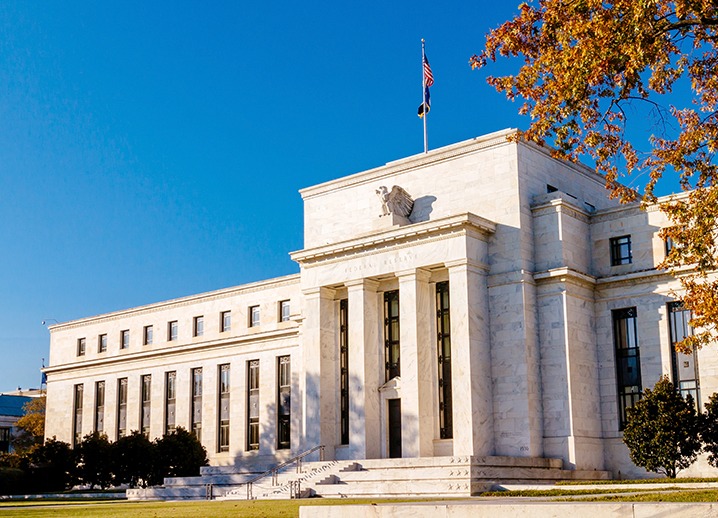4/26 - Insights into US Consumer Strength and Inflation Trends Ahead of FOMC Meeting
Apr 26, 2024 | Weekly Highlights

This week featured data releases that provide valuable insight into the strength of the US consumer and a key measure of inflation heading into next week’s Federal Open Market Committee (FOMC) meeting.
Today’s Personal Consumption Expenditures (PCE) inflation report showed that prices rose 0.3% month-over-month in March, an increase of 2.7% since last year. Core PCE, which excludes the volatile food and energy components, remained at 2.8% year-over-year, still above the Fed’s 2% inflation target. Much of the lingering inflation has been driven by rents and demand for services, especially in transportation, as spring break travel surged in March. Personal spending jumped 0.8% over the month, an increase of 0.5% after adjusting for inflation. The US personal savings rate fell to 3.2%, the lowest level since October 2022 as spending outpaced personal income growth of 0.5% month-over-month for March.
The first estimate for Q1 Gross Domestic Product (GDP) cooled to an annualized rate of 1.6%, weighed down by an increase in imports, a decrease in inventory investment, and a drop in government spending. Consumer spending continued to drive positive GDP growth, but additional credit capacity could prove to be more challenging in the future. Housing also contributed to the positive GDP print; new home sales rebounded 8.8% to 693,000 units annualized in March, as higher new home inventory levels caused prices to ease and builders offered incentives to encourage buyers. The 30-year fixed rate mortgage rate was 7.2% as of April 25, according to Freddie Mac.
Interest rates moved slightly higher this week as concerns about persistent inflation make a Fed rate cut unlikely for their May 1 announcement. The fed funds futures market is currently pricing in only one 0.25% rate cut by the November FOMC meeting, however the Chandler team still believes a modest reduction in the fed funds target rate is more likely this summer given the trajectory of the economic data and inflation. The 2-year US Treasury edged higher to about 4.98% this week, and the 10-year yield is up to 4.67% as of this writing, narrowing the yield curve inversion to about 31 basis points.
Next Week: Dallas Fed Manufacturing Activity, Employment Cost Index, Case Shiller Home Price Index, MNI Chicago PMI, Consumer Confidence Index, MBA Mortgage Applications, ADP Employment Change, S&P US Manufacturing PMI, JOLTS Job Openings, ISM Manufacturing, FOMC Meeting, US Employment Report, ISM Services Index
© 2024 Chandler Asset Management, Inc. An Independent Registered Investment Adviser. All rights reserved. Data source: Bloomberg, Federal Reserve, and the US Department of Labor. This report is provided for informational purposes only and should not be construed as specific investment or legal advice. The information contained herein was obtained from sources believed to be reliable as of the date of publication, but may become outdated or superseded at any time without notice. Any opinions or views expressed are based on current market conditions and are subject to change. This report may contain forecasts and forward-looking statements which are inherently limited and should not be relied upon as an indicator of future results. Past performance is not indicative of future results. This report is not intended to constitute an offer, solicitation, recommendation, or advice regarding any securities or investment strategy and should not be regarded by recipients as a substitute for the exercise of their own judgment. Fixed income investments are subject to interest rate, credit, and market risk. Interest rate risk: The value of fixed income investments will decline as interest rates rise. Credit risk: the possibility that the borrower may not be able to repay interest and principal. Low-rated bonds generally have to pay higher interest rates to attract investors willing to take on greater risk. Market risk: the bond market, in general, could decline due to economic conditions, especially during periods of rising interest rates.